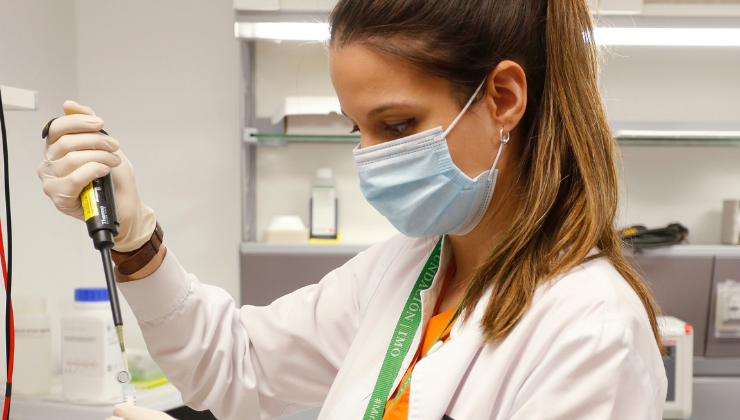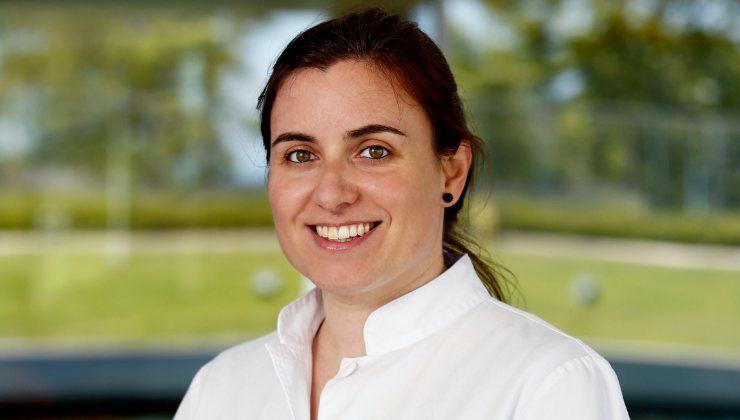Geneticists Esther Pomares and Víctor Abad and ophthalmologists Rafael Navarro and Anniken Burés from the IMO Miranza Group recently published a scientific article in the prestigious American Journal of Ophthalmology case reports, in which they expound the case of a patient with a mutation not described until now in the ARSG gene. This gene was related to Usher Syndrome for the first time in 2018 when a research team from Israel published an initial article associating the gene to this type of retinal dystrophy causing vision and hearing loss.
What is Usher Syndrome?
Usher Syndrome is a hereditary disease that is only developed by one gene ration, while most relatives are healthy carriers. It is a retinal dystrophy that is included within the so-called “rare or minority diseases”. More specifically it is a syndromic cause of retinitis pigmentosa, which means that it affects both the retina and other tissue, in this case the ear. It is the most prevalent syndromic cause of retinitis pigmentosa.
A new phenotype associated to the gene
In that study and in the one published by the team from the Institute, a new phenotype (way in which the disease expresses itself) associated to this gene is described, which consists of the late onset and slow progression of vision and hearing loss leading to Usher Syndrome. This new expression of the disease associated to the ARSG gene could be its “type 4”, as the 2018 article indicated and now confirmed by the IMO Foundation research team.
The research time found a mutation not previously described in the ARSG gene, related to this retinal dystrophy for the first time in 2018. Only 3 types were known until then.
IMO Foundation genetic study

The team described the case of a 40-year-old patient with incipient vision problems and sensorineural hearing loss, diagnosed after being sent to the specialist following an ophthalmology consult at IMO Miranza Group. A genetic study of the patient by the IMO Foundation team found that the altered gene is the ARSG, the same one described by the Israeli research group, which associated this gene to the disease for the first time based on 5 cases in 3 families in which vision loss occurred around the age of 40.
Up until that time, around 15 genes were known to be involved in the disease, which had 3 types:
- Type 1, with congenital sensorineural deafness, vestibular dysfunction (vertigo/loss of balance) and retinitis pigmentosa, beginning during the first decade of life.
- Type 2, with minor to moderate, non-progressive sensorineural deafness with onset retinitis pigmentosa during the first or second decade of life and normal vestibular function.
- Type 3, with progressive sensorineural deafness, sometimes accompanied by vestibular dysfunction, retinitis pigmentosa and appearing at different ages.
The supposed new “type 4” is late onset (at the age of around 40), progresses slowly, and for the first time is associated to the ARSG gene. However, the mutation discovered by both research teams is different, as the IMO Miranza Group case study found that the altered aminoacid is specifically adjacent to the one described by the Israeli team. In any case, the finding strengthens the hypothesis of the existence of this new type of the disease, expressed through a gene not previously related to it.

“The finding will enable us to detect patients who have been incorrectly classified until now, and to improve this classification in the future, including this gene in the screening for the genetic diagnosis of the disease”.
Dr Esther Pomares, head of research at the IMO Foundation, deputy director of the organisation, and Coordinator of basic R&D+i research projects at Miranza.
Future gene and cell therapies
“This and other similar findings provides us with greater knowledge of the molecular bases of genetic retinopathies, which is extremely useful for diagnosis and to focus the study of future treatments, using gene or cell therapy”, added Dr Pomares.
